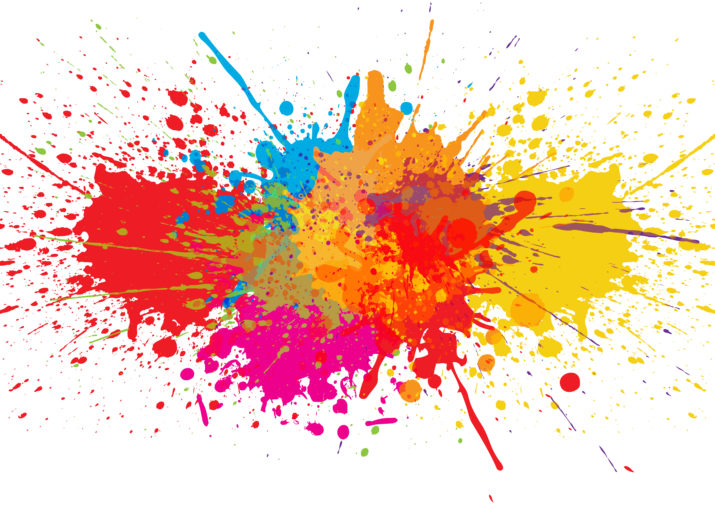

This is part of our Campus Spotlight on Princeton University.
In her masterful 2002 book Evil in Modern Thought, the philosopher Susan Neiman traces an “alternative history of philosophy” from the 1755 Lisbon earthquake to the September 11 terror attacks, arguing that the greatest advances in modern philosophy have been driven by the problem of evil, or ways of justifying the suffering of the innocent. For her, the revelations of mass death at Hiroshima and Auschwitz in 1945 ended the era of philosophical modernity that began with Lisbon. These events represent what Dan Diner (1988) called a “civilizational rupture” in Western consciousness because both were so “conceptually devastating” that they defied existing moral and legal frameworks and demanded a reworking of thought itself (Neiman 2002, 251–2). This notion of conceptual devastation has shaped my understanding of catastrophe. In my dissertation, I trace the concept through twentieth-century European thought, focusing on German and Jewish contributions to critical theory and the philosophy of history. Neiman (2002) elaborates on this important aspect of what constitutes a catastrophe:
Rather than asking why this particular event produced the sense of unique devastation that heralds the violent end of an era, we should look more closely at what conceptual resources were destroyed. Like [the Lisbon earthquake of 1755], Auschwitz acquired significance in relation to the web of beliefs in which it occurred. What seemed devastated…was the possibility of intellectual response itself (256).
To call something a catastrophe, then, is not only a first-order observation about the way the world is but also a second-order judgment about the way the world should be. Catastrophes are not simply events causing death and destruction (like accidents, disasters, or calamities), but moments of “overturning” or “a subversion of the order or system of things” (Oxford English Dictionary). Catastrophe happens when concepts fail, when the trauma of history overwhelms taken-for-granted powers of experience, thought, and language. Nitzan Lebovic and Andreas Killen thus posit a “Gordian knot” between the physical destruction of catastrophes and the “epistemological rupture” seen in “failures or breakdowns of conventional ways of knowing, representing, and signifying” (2014, 8, 5).
Herein lies an intrinsic problem for the intellectual history of catastrophe: how to recover the past lives of a notion that denotes the failure of conceptuality itself? And what happens when the concept of catastrophe itself seems to fail? The hegemonic German-language Begriffsgeschichten, or conceptual histories, of the term contend that the exaggerated or inflationary use of the term over the course of the twentieth century has allegedly led to its “diffuseness” and semantic “exhaustion” (Briese and Günther, 2009; Willer, 2018). As the category of catastrophe expanded and proliferated in the course of the twentieth century, the standard argument goes, it lost descriptive and explanatory power, as at once everything and nothing became a catastrophe. This conclusion has even led some scholars to conclude that the ambiguity inherent in the term “undermines” the requirement of a “relatively stable semantic core” necessary for a genuine Begriffsgeschicte (Mauelshagen, 2015, 186).
Grappling with this general problem in conceptual history, my dissertation focuses on the concept of history itself as a “permanent catastrophe” in the writings of thinkers including Walter Benjamin, Theodor Adorno, Zygmunt Bauman, and W. G. Sebald as a case study. Disputing the argument of semantic exhaustion, I aim to reclaim catastrophe as a site of political and semantic contestation and, relatedly, to defend its status as what the founder of conceptual history, Reinhart Koselleck, called a Grundbegriff, or fundamental concept, of Europe’s twentieth century. For as Koselleck once wrote, “It is precisely because of their irreplaceability that key concepts become contested” (Koselleck 2006, 534). In other words, it is when a term changes from being used as a partisan concept only by some to being used by all parties that it becomes a Grundbegriff—even if inflationary use, diffuseness, and competing conceptions of the term may result. Incorporating such semantic contestation into the history of the concept is what separates Koselleckian conceptual history from philology, the mere tracing of words; conceptual history remains inextricably linked to social and political histories that exceed language and therefore archival records. Historical semantics are thus never stable but always plural and contested, reflecting the contingency and power relations of modern society itself.
My work aims to redeem the concept of catastrophe for contemporary social criticism by focusing on one of its seemingly paradoxical forms: the notion of “permanent catastrophe”—a contradiction in terms if one hews to the conventional understanding of catastrophe as a sudden and unexpected rupture or overturning, but also its essential dialectical counter-concept. Contrary to the hegemonic Begriffsgeschichten, this term is not simply an exaggerated, inflationary usage, but rather a rigorous philosophical conception of history: it runs from Adorno’s claim, first developed around 1932, that “the recent past always presents itself as if destroyed by catastrophes” (2005, 49), to Benjamin’s reflection some years later that “…things [being] ‘status quo’ is the catastrophe” (1999, 473), to Sebald’s oblique and peripatetic accounts of “our history, which is but a long account of calamities” (1998, 295), to Cornel West’s insistence that “There’s never been a ‘Negro Problem’ in America; it’s been a catastrophe visited on Black people” (2016). Such explicitly political and polemical formulations contest how historical significance is allocated, decentering hegemonic histories and raising the question, whose suffering is considered catastrophic? Such use of catastrophe illustrates a point made by two important social-scientific works on crisis, Janet Roitman’s Anti-Crisis (2013) and Dara Z. Strolovitch’s forthcoming book When Bad Things Happen to Privileged People: Race, Gender, and What Makes a Crisis in America (2022): the rhetorical framing and designation of crisis, like that of catastrophe, matters because it enables certain social and political responses while foreclosing others. Relatedly, Michael Rothberg’s notion of “multidirectional memory” (2009) between the Holocaust and cases of colonial violence—such as Germany’s genocide of Herero and Nama peoples in colonial Namibia from 1904–07—has been at the center of recent debates about the politics of Holocaust memory and the nature of antisemitism in contemporary Germany (Catlin, 2021). Hastened by these debates, historical consensus is haltingly shifting toward a pluralistic decentering of the Holocaust as the modern catastrophe long called for by scholars of colonialism and Black experiences of slavery and Jim Crow (Weheliye, 2009).
The strict criteria of semantic stability and distinction of conventional Begriffsgeschichte rely on linguistically naive and historically depolicitizing criteria of philology, which misunderstand concepts as stable signifiers when in fact they often function as “semantic stockpiles”: sites of contestation deployed in struggles for power and recognition (Bollenbeck 2014; Rabinbach 2020a, 470 and 2020b, 105). In addition, they neglect new approaches to the history of concepts that emphasize the fundamentally metaphorical and pictorial dimensions of many concepts. Leading critics of conceptual history have long argued that semantic ambivalence is a distinctive feature of fundamental concepts rather than a fault. Hans Blumenberg contended, as one interpreter puts it, that “metaphor conditions concepts and not the other way around” (Hines 2020, 1) and his work attributes primacy to “absolute metaphors” that “steer the unconscious of the concept” (Müller and Schmieder 2016, 165). Jörg Trempler has also argued that the modern concept of Katastrophe is constituted through Katastrophenbilder, catastrophe-images, starting from popular illustrations of the Lisbon earthquake in the eighteenth century (2013). Some new conceptual histories have taken these insights to heart. Stefanos Geroulanos’s history of transparency in postwar France embraces semantic fuzziness and contestability, seeing concepts as “points” or “knots” in “conceptual webs” that tie together ideas and practices (2017, 23–25). What Koselleck (2004) called Gegenbegriffe, or counter-concepts, are a vital part of each web, and Willibald Steinmetz and Michael Freeden (2017, 26–27) similarly argue that “semantic fields” give rise to “conceptual interdependence” and “inter-conceptuality” between porous terms, such as catastrophe and crisis, that may become mutually “intertwined.”
The ambiguity of catastrophe thus may not simply be a failure, but also a feature that has led to its proliferation in contemporary discourses, not least about climate change. Catastrophe does not have one “authentic” use that has been over-extended and depleted, but rather has repeatedly been a site of contestation over the meaning of historical events. Willer (2018, 27) is thus closer to the mark when he notes that a striking aspect of the concept is its “fundamental borrowability and reinterpretability.” My dissertation presents the history of the concept of catastrophe in twentieth-century European thought not as one continuous semantic thread but rather as a Foucauldian genealogy and history of the present: a series of discontinuous contestations spanning from the Nazi ban on the term Katastrophe in 1943 to boost popular morale amidst allied bombing raids on German cities (Proctor 1988, 75) to Herbert Marcuse’s utopian notion of “the catastrophe of liberation” in his 1964 One-Dimensional Man (232).
IHUM as a site for interdisciplinary conceptual history
Robert Darnton (1990) once referred to the subfield of intellectual history as “the queen of the historical sciences” (191) on account of its capacious and inherently interdisciplinary engagement with literary studies, philosophy, and the arts, as well as conventional social and political history. In reality, however, it has long occupied only a marginal role in the historical discipline and has suffered from its perceived elitism compared to dominant schools of bottom-up social history and positivistic commitment to the primacy of archival documents (Catlin, 2017). Still, intellectual history shares a natural affinity with Princeton’s Interdisciplinary Doctoral Program in the Humanities (IHUM) and attempts not only to produce “transdisciplinary” engagements but to defy and challenge the rigid barriers that constitute disciplines themselves. Until I became a fellow there, and as someone with a BA in Great Books[1] and religious studies and an MA in philosophy, I had never fit comfortably in my PhD department of history. Whereas the contours of the discipline of history are sharply divided by geographical areas, ideas know much less rigid boundaries and, like many of the exiled German-Jewish scholars I study, regularly leap across oceans and continents into new contexts their creators could hardly have imagined.
When historians do engage with other media, from visual art to “theory,” they are often used quite reductively as pieces of “evidence” in conventional narratives. It was thus to my great fortune that in my first semester at Princeton, a co-founder of IHUM, the historian of science D. Graham Burnett, taught an experimental course entitled “What is / what was: Alterity and alternatives,” which aimed to explore aspects of historical experience that are excluded from and denigrated by the historical profession: historical reenactment, forgetting, loss and trauma, the body and genes as historical objects, etc. We read Nietzsche’s reflections on the use and abuse of history for everyday life. We also discussed the disorienting but also empowering Metahistory by Hayden White (1973), which famously argues that once we are deprived of immediate, objective reference to the past “as it really was,” historians are free to use historical writing to pursue “their own moral and aesthetic aspirations” (434). We sat with Frank Ankersmit’s notion of “sublime historical experience” (2005) and recalled surprising moments of contact with the past in our own intellectual journeys. We read Sebald’s The Rings of Saturn (1998) as an example of archivally-based “documentary fiction,” which includes reproductions of some real sources, and others that are entirely fabricated. And we reflected upon the insights and ethical dilemmas of Joshua Oppenheimer’s 2012 documentary The Act of Killing, which gives perpetrators of the Indonesian mass killings of 1965–66 a stage on which to reenact their fantasies of power and redemption. The class was archived on its own website, which remains a fascinating record.[2]
These are all aspects of historical experience one would rarely find legible or permissible as history in the contemporary historical discipline. Hence Burnett goes beyond the benevolent but abused and exhausted notion of inter-disciplinaritytoward the more radical notion of anti-disciplinarity: the goal of the course was to first suspend disciplinary knowledge production as usual and then to create a space in which to think about forms of expression and engagement with the past that may be more suited to the pressing questions of our times than the production of expensive, inaccessible, and dull nineteenth-century-style monographs. This takes place against the backdrop of the academy shifting toward corporate value structures and precaritized labor, a context in which those old ways can no longer be taken for granted. According to Burnett’s co-edited glossary of Keywords for academic life, “academia” in its current form functions as “service to the global economy through the production of monetizable knowledge, together with the rearing of students into desirable employees for profitable firms” (Burnett et al. 2018, 2). Yet, rather than capitulate to this cynical view of academic life in the neoliberal university, “What Is / What Was” created a space to remind us all of what drew us to our work in the first place, coupling critical self-reflexivity with appreciation for humanistic value.
That same volume of critical terms interrogated the term “interdisciplinarity” in its lofty as well as ideological aspects. So described “marginal zones,” it reads, function today as places of refuge between the disciplines for scholars excluded for various reasons from conventional rigid disciplinary structures. But they also come to serve an ideological function when the turn to “interdisciplinarity”—as the humanistic proxy for “innovation”—becomes a pretext for the defunding, merging, and closure of existing departments, contributing to the long-term crisis of the humanities, chiefly through the pervasive precaritization of academic labor (45). While my dearest and most stimulating academic experiences to date can very well be described as “interdisciplinary,” it is also worth emphasizing their anti-disciplinary quality: it is not only the connections they built but the rigid norms and expectations they bracketed that made them so valuable. At its best, Princeton’s program in interdisciplinary humanities is a rare site where such norms can be suspended. Only to an audience not composed of members of my own discipline, for example, could I have presented a work of auto-history I wrote linking the concept of catastrophe to traumas of my early childhood. By challenging disciplinary norms and encouraging productive frictions between fields, IHUM makes possible genuine intellectual exploration and creative conceptual labor that actively incubate new forms of humanistic thought for the post-disciplinary academy that is—for better or for worse—taking shape before our eyes.
Jonathon Catlin is a PhD Candidate in the Department of History and the Interdisciplinary Doctoral Program in the Humanities at Princeton University. His dissertation is a history of the concept of catastrophe in twentieth-century German and Jewish thought, with a focus on the Frankfurt School of critical theory. His writings have been published in Radical Philosophy, History and Theory, Antisemitism Studies, The European Journal of Cultural and Political Sociology, and The Journal of the History of Ideas Blog, where he is a contributing editor.
References
Adorno, Theodor W. 2005. Minima Moralia: Reflections from Damaged Life. Trans. Edmund Jephcott. London: Verso.
Ankersmit, Frank. 2005. Sublime Historical Experience. Stanford: Stanford University Press.
Benjamin, Walter. 1999.The Arcades Project. Trans. Howard Eiland and Kevin McLaughlin. Cambridge, MA: Harvard University Press.
Bollenbeck, Georg. 2014. “The Humanities in Nazi Germany after 1933: Semantic Transformation and the Nazification of the Disciplines.” In Anson Rabinbach and Wolfgang Bialas, eds., Nazi Germany and the Humanities: How German Academics Embraced Nazism. London: Oneworld.
Briese, Olaf and Timo Günther. 2009. “Katastrophe. Terminologische Vergangenheit, Gegenwart und Zukunft.” Archiv für Begriffsgeschichte, 51: 155–195.
Burnett, D. Graham, Matthew Rickard, and Jessica Terekhov, eds. 2018. Keywords;: For Further Consideration and Particularly Relevant to Academic Life, &c. Princeton: Princeton University Press.
Catlin, Jonathon. 2017. “In Dread of Derrida.” Journal of the History of Ideas Blog (Nov. 22).
Catlin, Jonathon. 2021. “Wounds of Democracy: Adorno’s Aspects of the New Right-Wing Extremism and the German antisemitism debate.” Radical Philosophy 2.10 (Summer).
Darnton, Robert. 1990. “Intellectual and Cultural History.” In The Kiss of Lamourette: Reflections in Cultural History. New York: Norton.
Diner, Dan, ed. 1988. Zivilisationsbruch: Denken nach Auschwitz. Frankfurt am Main: Fischer.
Freeden, Michael, and Willibald Steinmetz. 2017. “Introduction: Conceptual History: Challenges, Conundrums, Complexities.” In Conceptual History in the European Space. Eds. Willibald Steinmetz, Michael Freeden, and Javier Fernández-Sebastián. New York: Berghahn.
Geroulanos, Stefanos. 2017. Transparency in Postwar France: A Critical History of the Present. Stanford: Stanford University Press.
Hines, Andrew. 2020. Metaphor in European Philosophy after Nietzsche: An Intellectual History. Cambridge: Legenda.
Koselleck, Reinhart. 2004. “The Historical-Political Semantics of Asymmetric Counterconcepts.” In Futures Past: On the Semantics of Historical Time. Trans. Keith Tribe. New York: Columbia University Press (159–97).
Koselleck, Reinhart. 2006. Begriffsgeschichten. Ed. Carsten Dutt. Frankfurt am Main: Suhrkamp.
Lebovic, Nitzan and Andreas Killen. 2014. Catastrophes: A History and Theory of an Operative Concept. Berlin: DeGruyter.
Marcuse, Herbert. 2006. One-Dimensional Man. London: Routledge.
Mauelshagen, Franz. 2015. “Defining Catastrophes.” In Katharina Gerstenberger and Tanja Nusser, eds. Catastrophe and Catharsis: Perspectives in Disaster and Redemption in German Culture and Beyond. Rochester, NY: Camden House: 172–190.
Müller, Ernst and Falko Schmieder. 2016. Begriffsgeschichte und historische Semantik: Ein kritisches Kompendium. Berlin: Suhrkamp.
Neiman, Susan. 2002. Evil in Modern Thought: An Alternative History of Philosophy. Princeton: Princeton University Press.
Proctor, Robert N. 1988. Racial Hygiene: Medicine Under the Nazis. Cambridge, MA: Harvard University Press.
Rabinbach, Anson. 2020a. “Nazism was a unique modernist project.” Interview with Jonathon Catlin, Stefanos Geroulanos, and Dagmar Herzog. In Staging the Third Reich: Essays in Cultural and Intellectual History. Eds. Stefanos Geroulanos and Dagmar Herzog. London: Routledge.
Rabinbach, Anson. 2020b. “Rise and Fall of the Sattelzeit: The Geschichtlichte Grundbegriffe and the Temporality of Totalitarianism and Genocide.” In Power and Time: Temporalities in Conflict and the Making of History. Eds. Dan Edelstein, Stefanos Geroulanos, and Natasha Wheatley. Chicago: University of Chicago Press.
Roitman, Janet. 2013. Anti-Crisis. Durham, NC: Duke University Press.
Rothberg, Michael. 2009. Multidirectional Memory: Remembering the Holocaust in the Age of Decolonization. Stanford: Stanford University Press.
Sebald, W. G. 1998. The Rings of Saturn. London: New Directions.
Strolovitch, Dara Z. 2022. When Bad Things Happen to Privileged People: Race, Gender, and What Makes a Crisis in America. Chicago: University of Chicago Press.
Trempler, Jörg. 2013. Katastrophen: Ihre Entstehung aus dem Bild. Berlin: Klaus Wagenbach.
Weheliye, Alexander. 2009. Habeas Viscus: Racializing Assemblages, Biopolitics, and Black Feminist Theories of the Human. Durham, NC: Duke University Press.
West, Cornell. 2016. “A Conversation with Cornel West” (with Danielle Allen). Harvard University (Oct. 5): https://youtu.be/6jggD7bDmkw
Willer, Stefan. 2018. “Katastrophen: Natur – Kultur – Geshichte. Ein Forschungsbericht.” H-Soz-Kult (Sept. 13): http://hsozkult.geschichte. hu-berlin.de/forum/2018-09-001
[1] The University of Chicago’s undergraduate major Fundamentals: Issues and Texts, an undergraduate version of the Committee on Social Thought’s Ph.D. program, was founded in the 1980s by Allan Bloom as a defense of Western Civilization against the rising tide of multiculturalism, world literatures, area studies, and the study of race and gender; however the program has since shed much of this conservative focus on a European canon.
[2] See: https://whatiswhatwas.wordpress.com/




